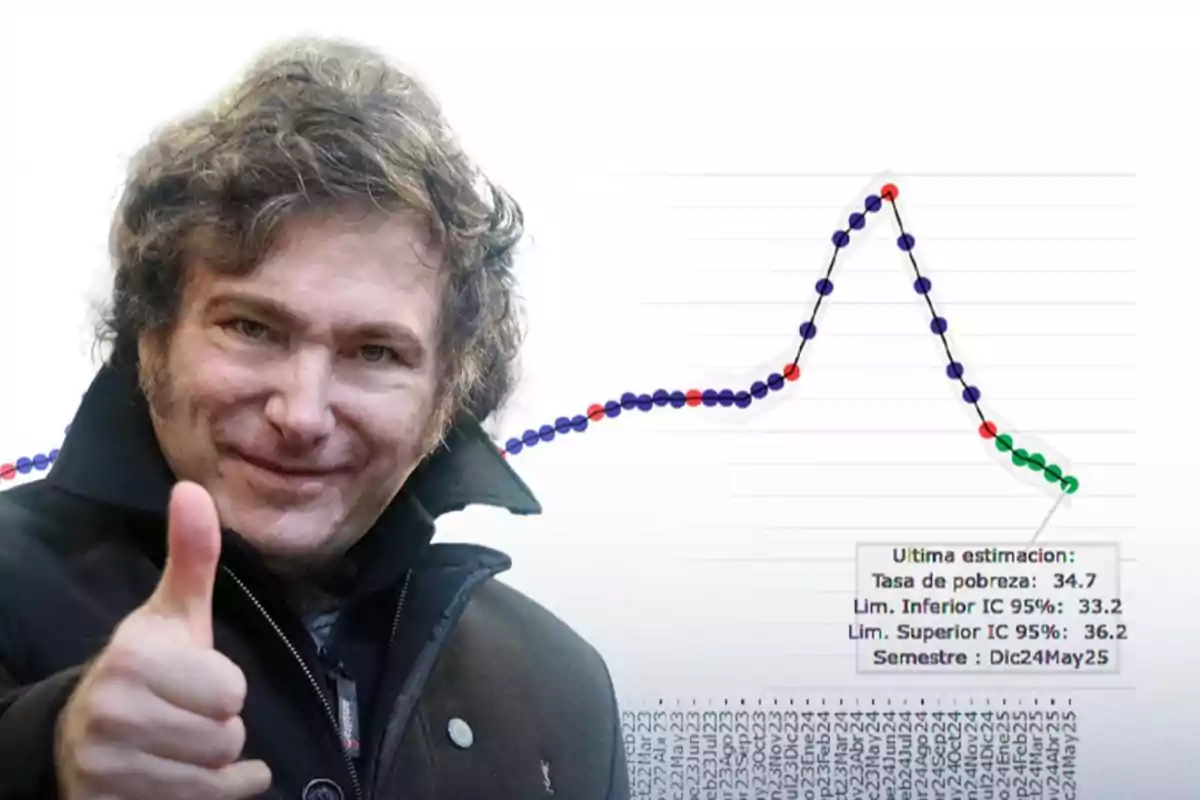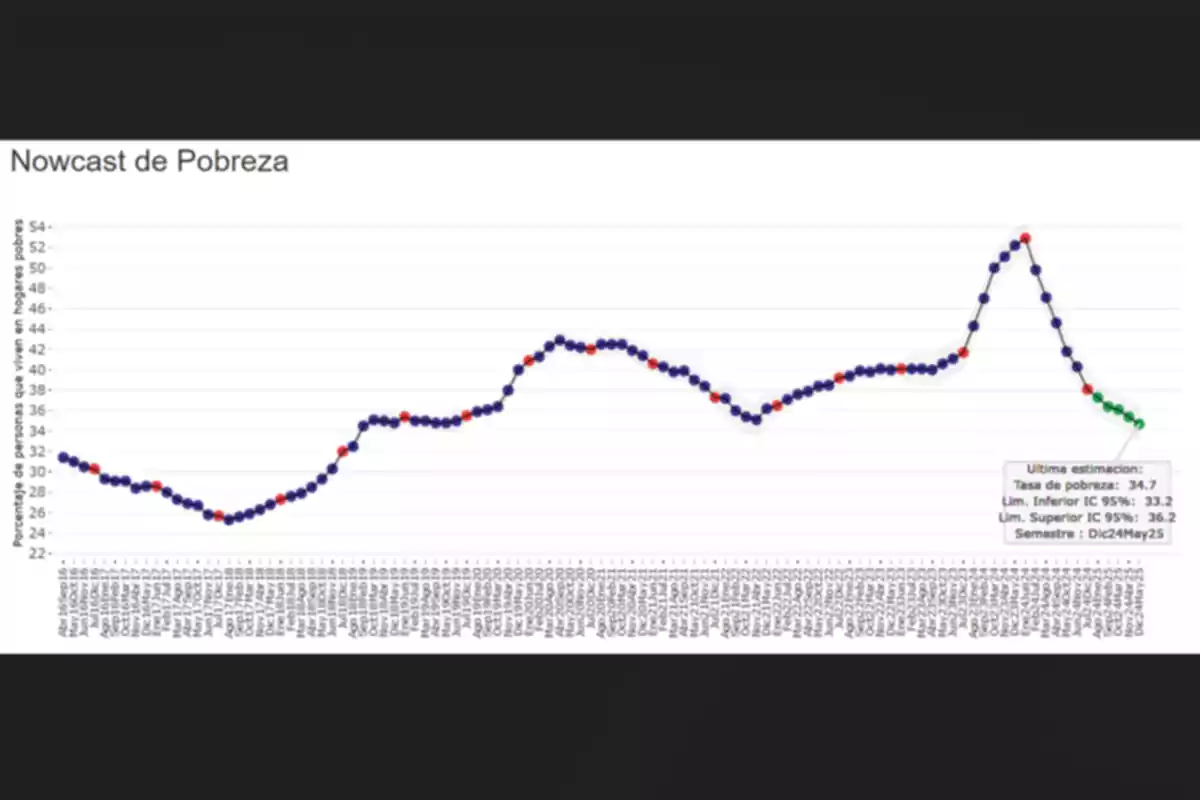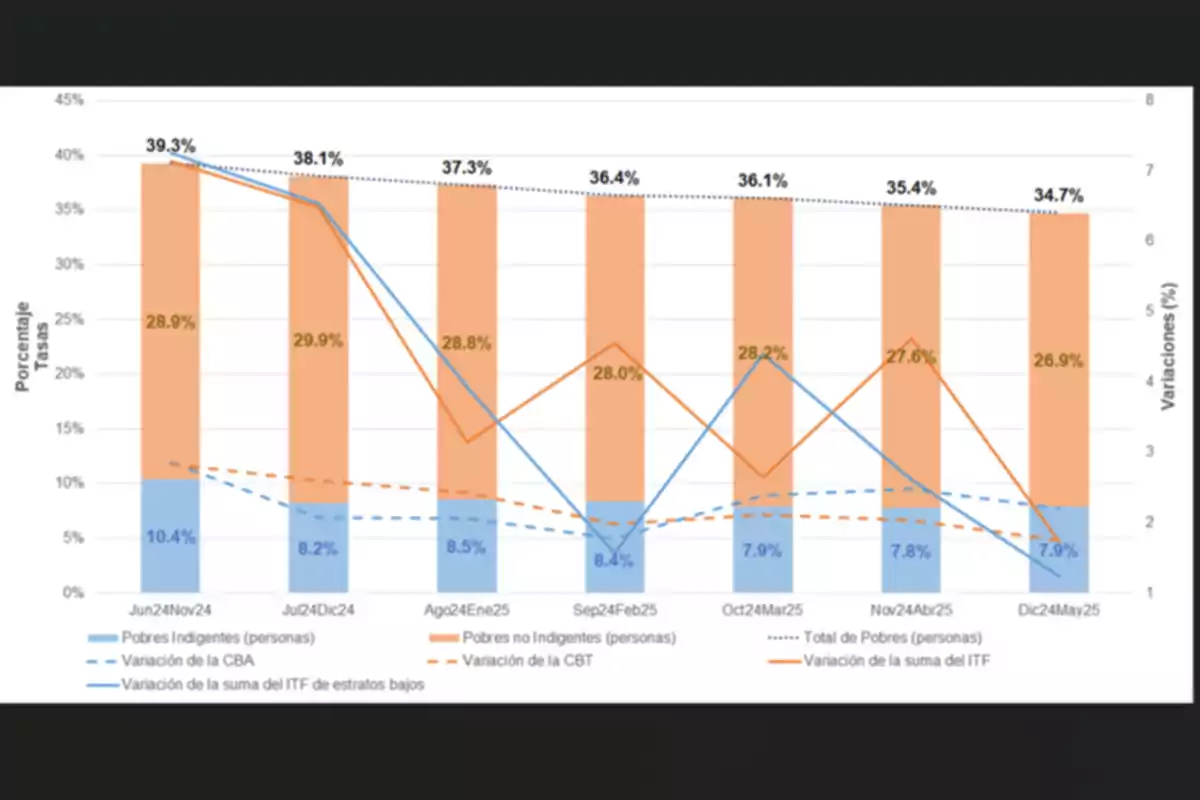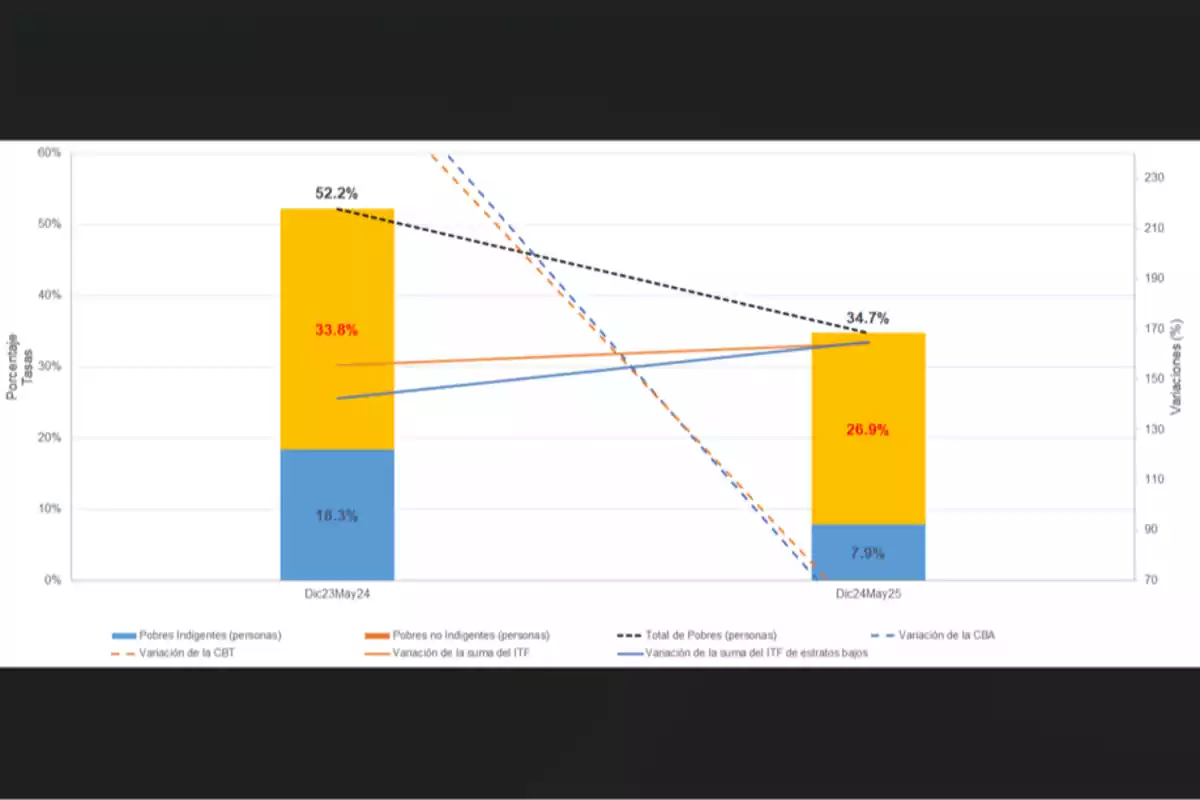
Javier Milei's government achieved a colossal decrease in poverty levels
According to the Poverty Nowcast from Universidad Torcuato Di Tella, Milei achieved an unprecedented decrease in poverty levels
In a development that marks a turning point in Argentina's economic policy, poverty dropped significantly during Javier Milei's administration. According to the latest projections from the poverty nowcast, based on official data from the Permanent Household Survey (EPH) of INDEC, the poverty rate fell by 8 percentage points between the first half of 2024 (January–June) and the April–September half of the same year, dropping from an alarming 52.9% to 44.9%.
The decline is significant: it represents an improvement in the situation of more than 2.3 million people who managed to escape poverty in just a few months. This phenomenon, far from being a matter of chance, is technically explained by a significant increase in the real value of family per capita income, measured against the inflation of the total basic basket (CBT), and by a more equitable income distribution. The improvement, however, was partially offset by a rise in the real value of the CBT—that is, the threshold used to measure poverty—which by itself would have raised the poverty rate by almost 7 percentage points.

Specifically, the value of the per capita total basic basket in the first half of 2024 stood at AR$195,896. The average family per capita income, compared to that threshold, resulted in a poverty rate of 52.9% over a representative urban population of 29.6 million people. This means that around 15.7 million Argentines were living in poverty at the beginning of the year.
However, the turning point did not take long to arrive. By the December 2024–May 2025 half, the nowcast projects a poverty rate of 34.7%, with a 95% confidence interval between 33.2% and 36.2%. In other words, this is a reduction of 18.2 percentage points compared to the first half of the year, and nearly 10 million people escaping poverty in a single year.

The detailed analysis of the period shows a poverty rate of 36.9% in December 2024, 34.4% in the first quarter of 2025, and 34.2% in the April–May two-month period. This remarkable progress not only confirms a positive trend, but also implies a structural transformation: while the average total basic basket (CBT) in the Greater Buenos Aires region increased by 52% year-on-year, total family income (ITF) grew by an impressive 120.8%.
This relationship between income and poverty thresholds highlights the success of the libertarian economic program led by President Milei. Far from the catastrophic predictions that forecasted more poverty as a result of the adjustment, the numbers demonstrate a real recovery in purchasing power and a significant improvement in distributive equity.

The improvement is not limited to poverty alone. Extreme poverty—those whose income is not even enough to cover the basic food basket (CBA)—fell dramatically: from 18.3% to 7.9% year-on-year, that is, a reduction of 10.4 percentage points.
The keys to this transformation lie in the closing of the gaps between the evolution ofbasic baskets and the income of the most disadvantaged sectors (deciles 1 to 4 of the population). During the first half of 2024, those gaps peaked and caused a temporary increase in poverty. However, starting from the March–August half of the same year, incomes began to grow above the baskets, consolidating a trend reversal that is already reflected in the indicators.

The latest projected variation of the CBA (compared to the November 2024–April 2025 half) was 2.2%, while the income of the lower sectors grew by 1.2%. Meanwhile, the CBT and average total income grew at similar rates, around 1.7%.
All this demonstrates that, in a context of macroeconomic stabilization and fiscal discipline, the fruits of change are arriving. The model of economic freedom and rationalization of public spending not only stabilizes prices: it is also beginning to heal the deepest social wound of recent years.
More posts: